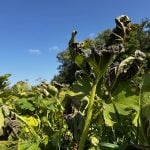Water infrastructure is suffering from insufficient government dollars, says Saskatchewan Conservation and Development Association
Saskatchewan’s commitment to managing water in a more co-ordinated fashion should include a renewed funding commitment to local agencies involved in water management.
Grant Wolowski, president of the Saskatchewan Conservation and Development Association, said provincial funding for local water authorities has been eroding for several decades.
Current funding is too low to ensure proper maintenance of existing water control infrastructure in the province, he said.
In addition, new organizations that are trying to get involved at the local or regional level are running on tight budgets and unable to do the work they consider essential.
Read Also

Trade war may create Canadian economic opportunities
Canada’s current tariff woes could open chances for long-term economic growth and a stronger Canadian economy, consultant says — It’s happened before.
“Right now, our main issue is the development of new (infrastructure projects) that we need and the lack of any government funding for them,” Wolowski said.
“Even the funding for cost sharing of maintenance (on existing projects) is less than 50 percent. Without adequate government help, either the projects aren’t maintained properly or local taxes will have to go up a lot.”
The association represents watershed authorities and regional water management boards that manage water in a co-ordinated fashion.
Infrastructure under their authority includes drainage ditches and control gates.
The province used to provide 100 percent of funding for local water projects, but Wolowski said that has since fallen to below 50 percent.
Engineering services, which were once provided by the province, were also withdrawn in 2005.
Wayne Dybvig, president of the Saskatchewan Water Security Agency, said the province has invested more than $70 million in water management in the past four years.
He also said the government has supported new projects since 2010.
High water levels and heavy rain have increased demands for provincial funding, he added.
Five new watershed authorities have been established in the province in the past four years.
Extreme weather and flooding during the past few years have put a renewed emphasis on the need for water control infrastructure.
Dybvig said major flooding in 2010, 2011 and 2014 put a strain on existing infrastructure.
Heavy rain in 2011 resulted in one-in-500 year water levels in the Souris River system.
In 2014, an area that covered 80,000 sq. kilometres received 100 milli-metres of rain over 11 days in late June and early July, causing water to breach more than 400 roads and resulted in one-in-200 year water levels in the Lower Qu’Appelle system.
“It’s very unusual that we have that extreme amount of rainfall over such a large area, and of course we had a lot of consequences because of that,” Dybvig said.
brian.cross@producer.com















